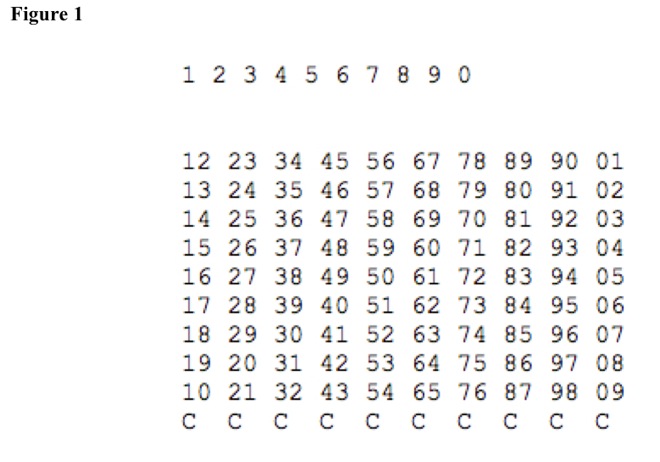
Cell arrays can pool more than one sample in cells, which allows fewer cells. Methods {deconvolution} can track sample pooling.
convolution
Convolution puts each sample into several cells, in regular pattern. Testing looks for one effect. Some cells show effect, but most do not. If sample causes effect, all cells with that sample show effect. Cells that contain that sample form pattern, so pattern indicates sample name.
deconvolution
Deconvolution uses convolution method and resulting cell pattern to find sample name. For example, for 100-cell array, 10 samples can feed into 90 cells, each cell receiving two samples. Ten cells have control samples. See Figure 1. Samples are in 18 cells. If testing shows that all 18 have activity over threshold, then that sample is effective.
If sample interactions cause effect, deconvolution can find interactions. If testing shows that only one cell has activity over threshold, those two samples must interact to be effective.

Physical Sciences>Chemistry>Biochemistry>Drug>Activity>Methods
5-Chemistry-Biochemistry-Drug-Activity-Methods
Outline of Knowledge Database Home Page
Description of Outline of Knowledge Database
Date Modified: 2022.0224